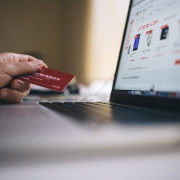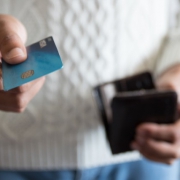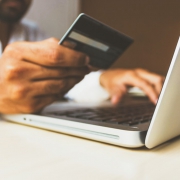When you sign up for an online account, you are asked two main things: a username and a password. All websites you visit require a strong password… but what constitutes a strong password?
Mostly, these are the basic requirements for a password:
- should have at least eight characters
- different from all your other passwords
- should contain a combination of letters and numbers
- some even require special characters like !, _, -, #, $, @, and so on.
In my previous post, I shared some preventive tips in order to avoid identity theft. One of my tips suggested the use of strong passwords. So, for this post, I will expound further on that topic. Here are some notes to consider when creating strong passwords:
-
Passwords should be unique.
- Another tip is to create different passwords for your different accounts. Often times, people just use ONE password for all accounts. That should not be! Each account should have its own unique password.
- If you are using the same password on every online account, you are in big trouble. Once the hacker has your Gmail password, it’s now easy to access your other accounts on Facebook, Instagram, WhatsApp, Twitter, Viber, and many others.
-
Constantly change passwords.
- Remember to change your passwords regularly. Usually, online services would notify you of a suspicious behavior. This is a sign that your account could be compromised.
- Once you have changed your password, do not share it with anyone. If you need help with remembering important details, I suggest using a password manager.
-
Never write your password down.
- For most people, they use random characters, which is hard to remember. The last thing you want to do is jot them down or keep it near your desk. This is security flaw; never do this!
- A tip for this step is to take a name or a word that you can easily remember. Then, capitalize a random character from this word, and special characters in between. To illustrate, here are some examples:
- mArgar3t!th#atchEr from the name Margaret Thatcher
- Nov0Anch0r45 from the words Novo and Anchor
- L0vyBea9ty1_2 from the words Love and Beauty
-
Do not repeat old passwords.
- Websites asked you to update your passwords and input a new one. Mostly, we don’t really generate a new one. Instead, we just reuse old passwords. This is a bad idea! No, do not repeat passwords that you have used.
-
Use a password manager.
- Again, let me emphasize the use of password managers. These tools are safe, and they will help you in remembering complicated passwords. If you simply rely on your own ability, you can’t remember that many passwords. So, store your passwords in passwords managers because they encrypt your data unlike when you just write it down.
- To name a few, you can use password managers like LastPass, BitWarden, and etc.
Passwords are needed in every website, and you must adhere to the best practices listed on this post to avoid data breach. You can use a dictionary to get an inspiration, but do not use the exact word as a password. You have to randomize the letters and add more special characters & numbers to the equation. A final note to remember: the longer the password, the better and safer it is for you!










